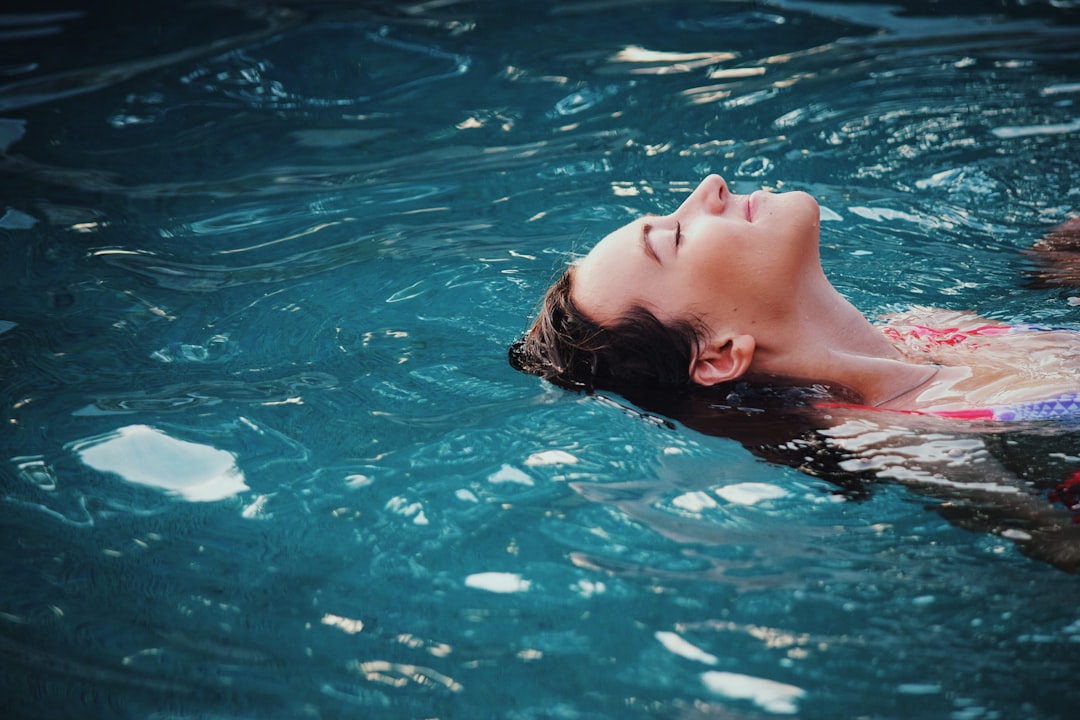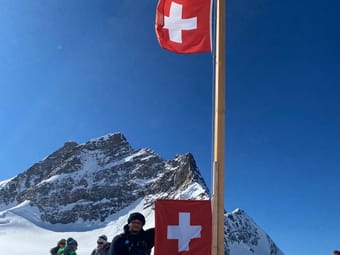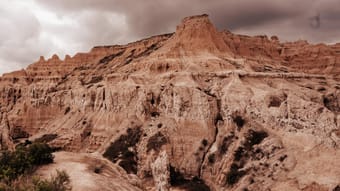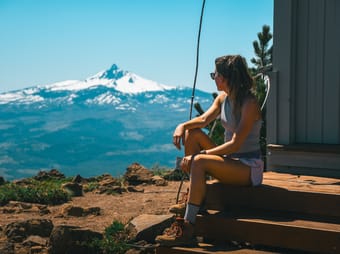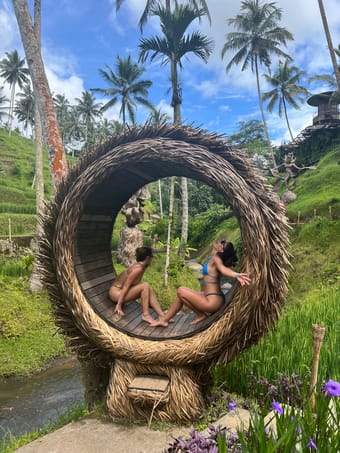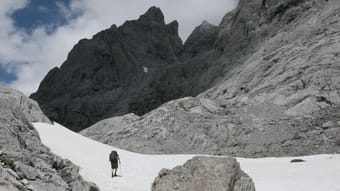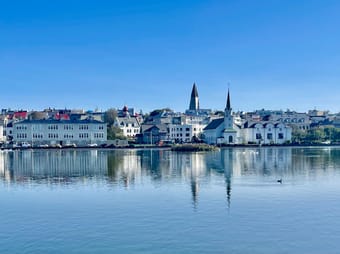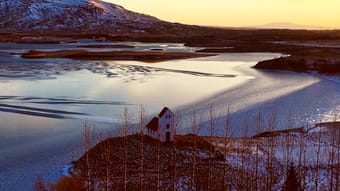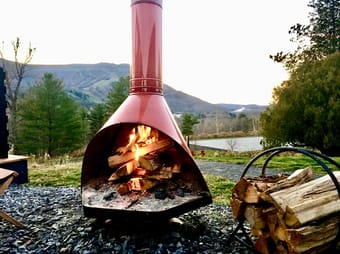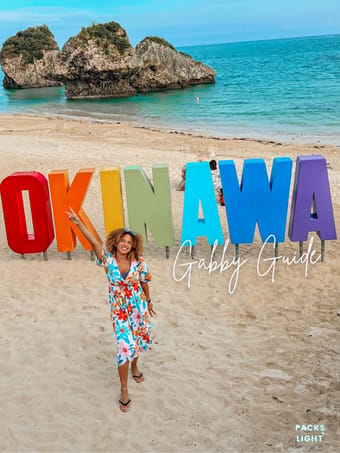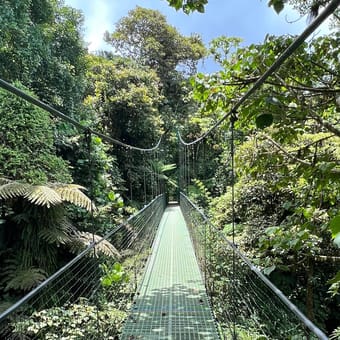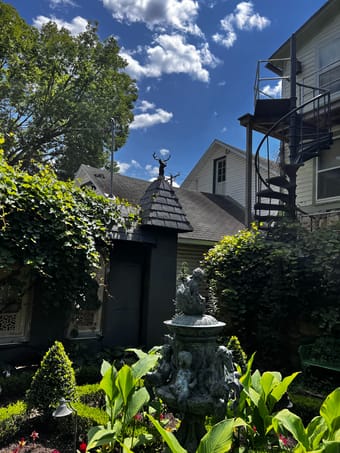Results for Black Forest
Nestled in the Black Forest area of Germany, Baden-Baden brings the ultimate unwinding experience you need, while soaking in spas with good food and wine.
If you are looking to relax and treat yourself, or gift your loved ones an experience to remember, this might be THE place for you. Re
Vegetarian • Vegan • Solo Female • Couples • Wellness • Romantic • Relaxation • Luxury
Free
1
The hard yards (a great deal of effort or hard work - Australian slang) have been done with this guide I have spent time curating the perfect list of my go-to and want-to for the next trip (I visited Lyon three times last year alone) best over 2-3 days but the guide has plenty more for an extra day or 2. It includes the following.
- 18 Restaurants (high-end to local favourites)
- 16 Bars and Cafes (frequented by locals)
- 7 Musemes (worth the effort and time)
- 4 Markets (antique but mostly food)
- 5 Hotels (high-end to affordable)
- 5 Speciality Stores not to miss
Welcome to Lyon, a city that effortlessly blends rich gastronomic traditions with a vibrant modern spirit. Renowned as the gastronomic capital of France, Lyon captivates visitors with its diverse culinary scene, from high-end establishments to charming Bouchons offering traditional Lyonnaise delights. Beyond its culinary prowess, Lyon stands as a livable city, embracing fresh produce markets, impressive museums, and a welcoming atmosphere. Join me on a journey through Lyon's iconic streets, uncovering its hidden gems, diverse flavours, and the unique blend of historic charm and contemporary allure that makes it a standout destination in Europe. - I am moving:)
Female Solo • Digital Nomads • Business • Couples • Groups • Car-free • 50+ • LGBTQ+ • Architecture • Art • Boutique • Luxury • History • Foodie • Coffee • Wine • People & Culture • Slow Travel • Relaxation • Romantic • Photography • Design • Road Trip
$5.00
7
How To Explore Switzerland 🇨🇭 the best in a 3-4 day exploration !
My Exploration to Switzerland took place in October. I was in Switzerland for 4 days during my visit there.
Here you will find what excursions I recommend to do & place to stay while in Switzerland.
Tag Me & Follow @exploration_wonders on IG. Love to see where you end up in Switzerland 🇨🇭!
Couples • Groups • Adventure • Nature • Photography • Mountain • Relaxation
$15.00
0
This Guide features 2 days filled with hiking, camping and site seeing in Badlands National Park! Make a weekend roadtrip, or add it to your cross country itinerary. Either way, the Badlands is a must see!
Family • Groups • Female Solo • Adventure • Budget • Camping • History • Outdoors • Road Trip • Photography
Free
1
Welcome to Hawaii Island (aka Big Island), one of the most ecologically diverse places in the world where you can discover 8 climate zones in one vacation. From volcanic lava fields, and tropical rain forests, to pristine black sand beaches, and a snow-capped mountain (in winter). This island offers a perfect blend of something for everyone. Discover why King Kamehameha called this magnificent island home.
What to expect in my guide?
❕7 to 10-night itineraries customizable to your interests
❕Hotel recommendations based on my site inspections
❕Extensive restaurant recommendations. Looking for a great burger? Best shave Ice? Or James Beard award-winning restaurant? I've got you covered.
❕Shopping guide. Find that perfect Hawaiian shirt or special momento handcrafted by local artisans.
❕Self-drive tours you can do on your own
❕Small group tours & experiences that offer great value
❕Private tours that are worth the splurge
Feeling a bit overwhelmed by all the choices? Let's hop on a call together, and you can pick my brain about anything and everything Hawaii-related. See the link included in my guide.
Adventure • Nature • Beach • Relaxation • Sustainable/Eco • Boutique • Road Trip • People & Culture • Luxury
Free
17
Welcome to my completely unorganized but oh-so-helpful map of Asheville and Black Mountain! An absolute smorgasbord of my own travels and research, suggestions from friends and strangers, and many treasures found along the way, this is where I compile all things Asheville for my future trips and yours. Things I particularly love that you’ll find a lot of:
☕️ Coffee shops & bakeries
🌮 Local cuisine
🏛️ Museums of all kinds
🌳 Gardens & parks
🛏️ Boutique hotels
🍕 Small regional chains with good reputations
All my guides in this category are $5 per 100 places included, but since I add to these constantly, you can lock down the lowest price today and gain a lifetime access!
Couples • Family • Architecture • Art • Budget • History • Foodie • Coffee • People & Culture
$5.00
2
Willamette National Forest is truly an outdoor lover’s dream with tons of waterfalls, snow-capped mountains, hiking trails, & hidden swimming holes (like the famous bright blue one!). Here’s exactly what you can expect from my Willamette National Forest guide 👇
This guide is the result of hours upon hours of planning, research, and my in-person experience. It includes an fun features such as an interactive map, directions that connect directly to your phone’s Google or Apple Maps app, and the exact coordinates to some of my favorite hidden gems & hiking trails.
It lays out instructions to help you plan your perfect trip to this area including over a dozen outdoor activities (including 9 waterfall hikes, 1 bright blue swimming hole, an underground lava tunnel & even a riverside hot spring!), accomodation suggestions, direct links to every resource you could need, suggested photo locations, behind the scenes exclusive photos and videos from me, and so much more! It’s mobile friendly when you download the Thatch App for free so you can easily access all of the info right from your phone.
I have hand crafted this guide specifically for adventure travelers (like me!) and feel so confident you will have an amazing trip with this guide by your side 😏 As a part of your purchase of the guide, here are a few promises I can make you:
1. This is a LIVING guide: I will update it as I find more information and discover more places which means you have lifetime access to updated information as it’s added!
2. I only make guides based on areas I have not only been to but know well! I include both activities that I have done myself as well as those that are on my bucketlist for next time I visit! I will always call out the ones I have not done yet and provide you the exact resources you need to experience them yourself!
3. These guides are completely transparent! You can be sure that all unfiltered opinions I provide are my own 🙃 If I include any sponsored information or affiliate links, I will be sure to call these out directly. I will only include these if they benefit you (such as a discount code or coupon!)
I can’t wait to hear about & see your adventures! Feel free to send me a DM with your feedback & tag me in your photos! @katbennettphoto
Adventure • Nature • Sustainable/Eco • Camping
$7.00
58
Bali, an Indonesian island known for its forested volcanic mountains, iconic rice paddies, beaches, and coral reefs, is a paradise for travelers. Its rich culture, stunning natural beauty, and vibrant arts scene make it a must-visit destination.
In this guide we will tell you our experience in Bali, best places that we have been and best activities that we did. Our itinerary, contacts and prices. All you need to know before going in the famous Indonesian island.
Backpacker • Vegan • Vegetarian • Female Solo • Family • Groups • Couples • Adventure • Budget • Coffee • Foodie • Outdoors
Free
3
Seven-day trek based in refugios.
INTRODUCTION
The Picos de Europa is a region of limestone peaks reaching over 2500 metres above sea level; the highest being Torre de Cerredo at 2650 metres. The route described here is one that I hiked alone in early summer. The best time to tackle the route is between June and September. There is more likely to be snow on the high passes in early June but they are usually not to difficult to negotiate.
The Picos de Europa is not as well known as the Pyrenees or Alps and as such the hiker traffic is less and the tourist infrastructure is less developed. This makes the area feel less spoilt but it can also make it a more challenging area to explore with fewer trails and little to no signposting. Always take a map with you: the Editorial Alpina 1:25,000 maps are the best. I took these and also used the outdooractive app and downloaded the relevant map tiles. This is useful for pinpointing where you are, in what can be confusing terrain. I was lucky to have clear weather for my entire trek but I would imagine that it's pretty difficult to navigate when the cloud is down on the mountains so take a compass too.
You can stay in refugios every night on this hike and wild camping is permitted above 1500m; details below.
I can't recommend the Picos de Europa as a hiking destination enough. The mountains are magnificent but there are also beautiful extensive woodlands at lower altitudes, as well as meadows full of wildflowers and butterflies. The juxtaposition between the stark limestone peaks and the gentle greenery of the valleys is beguiling.
DISCLAIMER: Please note that hiking in the Picos de Europa is not risk free. It is a very challenging area in which to hike. I accept no responsibility for any accidents you may experience while hiking this route. You are responsible for your own safety. Some of the dangers and difficulties are listed a little further down this guide.
HOW BUSY?
Unlike some of the more well know hikes around Europe this trail is less well trodden and as such the trail can be quite hard to follow at times, and at other times there is no trail! Despite this, refugios, being small, fill up fast (see below).
REFUGIOS
The hike is made easier if you stay in the staffed refugios where you can recharge your metaphorical batteries. Accommodation at these mountain huts is in communal dormitories and you will need to bring your own sleeping bag. It's best to book ahead as they are often full throughout the summer. Prices are around the €12-17 mark and they also do affordable meals (breakfast, picnic lunch and dinner).
There is also a handful of unstaffed, very basic mountain shelters with no services and no beds but these can be a good option in an emergency. Most of the refugios only accept cash so be sure to take plenty with you before you set off as there are no ATMs! All the refugios on the route are listed in the route description below with website links.
WILD CAMPING
Camping is only permitted at 1500m above sea level or higher. There is not much water anywhere above this altitude so be sure to fill up when you get the chance (at refugios) before camping in a remote spot.
POSADA DE VALDEON
This beautiful village tucked in the valley between the Macizo Central and Macizo Occidental is a lovely place to wander for a few hours. At the centre of the village there are a number of restaurants and bars and a small square with a water fountain. If you need somewhere to stay before or after the trek you'll find hotels, guest houses and a youth hostel. There is a hotel recommendation and link in the route description.
In the centre of the village is a pharmacy should you need any blister plasters! And on the road to the west of the village is the National Park office where you can find information about hiking and anything else to do with the national park.
GETTING THERE
From the UK there are Ryanair flights to Oviedo (Asturias airport) from London Stansted. A bit further afield you can get flights to Bilbao and Santander from the UK and the rest of Europe. Getting from the airport is a little complicated but there are buses to Posada de Valdeón from Oviedo changing in Cangas de Onis. The journey takes about 4.5hrs. There are also buses from Santander and Bilbao changing in Llanes and Riaño with the journey taking around 15hrs from Bilbao.
An easier but more expensive option is to get a taxi. You could also hire a car but of course you will have to leave the car sitting idle in Posada de Valdeón while you do the hike.
FLORA & FAUNA
This area of northern Spain is fantastic for wildlife. At lower elevations the beech and sessile oak woodland stretches for miles over rolling hills. This is part of the boreal forest that once would have covered much of Europe and is home to roe deer, wild boar, red squirrels, pine martens and brown bears.
In the skies you have a good chance of seeing griffon vultures, golden, booted and short-toed eagles, black kites and peregrines. Of the smaller passerine species the Picos are home to red-backed shrikes, black redstarts, spotted flycatchers and black woodpeckers.
But it's the wildflowers in the meadows and on the woodland edges that are the real joy and most easily appreciated. Vetches, cinquefoils and orchids create a colourful patchwork of colours with butterflies bringing the whole scene to life. Look out for swallowtails, fritillaries and hairstreaks.
NAVIGATION
Navigation is difficult as the terrain can be confusing and in many places there is no trail whatsoever. Take a map (1:25K Editiorial Alpina maps are the best), compass and GPS and know how to use them. It's also a good idea to download the map on a relevant map app. I used the outdooractive app but others are available.
WEATHER
Thunderstorms are common, usually in the afternoon and these can be particularly dangerous high up in the mountains. It's best to hike early and get to a refugio by lunchtime if there are afternoon thunderstorms in the forecast. The weather in this part of Spain is very changeable as it has a maritime climate. Rain and thick fog are possible but equally long periods of warm sunshine are not unusual. The best advice I can offer is to be prepared for anything. Pack suncream and a sunhat but don't forget your waterproofs either.
FALLING ROCKS
Rock falls are not unusual as chamois and other hikers can dislodge rocks above you. Getting caught in a rockfall is not so common but not impossible. Be aware and if you see rocks heading your way, and cannot find cover, crouch down on the floor and pull your rucksack over your head and back.
DRINKING WATER
There is very little running water as these mountains are mostly comprised of permeable limestone. You will need to take plenty of water with you each day (I packed three litres every day and usually drank it all). You can fill up at the refugios and there are a few fountains / fuentes although most of the ones I saw marked on the Editorial Alpina map were dry when I found them.
THE SUN
Sunburn and sunstroke are both real dangers and there is little shade. Keep hydrated and wear a sun hat that covers your neck.
TERRAIN
In some places you need to scramble up steep rocky sections. You will need to have experience in this kind of terrain and have a head for heights! The terrain is very rocky and uneven at higher altitudes so you will need strong, sturdy footwear. Trekking poles are also invaluable in providing support and helping you across and up awkward sections. There is also a lot of steep ascent and descent on this route so you will need to be reasonably fit.
DANGEROUS ANIMALS
On many parts of the trail you will encounter cows. In my experience they are very docile and used to trekkers so they shouldn't be of any concern. You may also find flocks of sheep and while these aren't dangerous they are often accompanied by shepherd dogs which have been trained to keep intruders away from the flock. They can be quite intimidating when they start barking at you. If you see sheep ahead it is best to give them a wide berth, even if this means veering away from the trail for a while. If you walk directly towards or through a flock of sheep you risk agitating the shepherd dogs.
Bears are not common in the Picos de Europa but there are bears in other parts of the Cantabrian Mountains, notably Somiedo National Park, not far to the west, and there is always the possibility of seeing an itinerant bear wandering through the Picos. Eurasian brown bears are not as big nor aggressive as the grizzly bears of North America so you shouldn't worry too much about an encounter. It's extremely unlikely you will see one so if you do, consider yourself very lucky.
Wild boar are common in the woodlands at lower altitudes. They are not as aggressive as some people will tell you and tend to be nocturnal. I did see some in the daytime near Vegabaño. As soon as they saw me they ran away, crashing through the undergrowth. As with any large animal it's best to simply give them plenty of space to move away from you.
I hope none of this advice puts you off hiking in the Picos de Europa. Yes, it's a challenging mountain area but the rewards for hiking here are great. Enjoy the hike!
Adventure • Nature • Slow Travel • Sustainable/Eco • Mountain • Camping
$12.00
3
This itinerary outlines nine days of continuous adventure on the North Island of New Zealand. Spend a couple days exploring Auckland and the nearby islands, head out west for some black sand beaches and secret coves, hit up some insane hiking trails, and head to the east coast for some stunning beaches that draw the local crowds all summer.
This itinerary is partially in hotels, but most of it is geared towards campervanning or rooftop tenting it through the North Island (that's what we did & LOVED it). It also includes a few hours of driving a day, and quite a few hiking opportunities (of course these can be substituted for other activities in the area). If you don't want to drive as much you could always spread the activities over more days, or skip your least favourite part to spend more time in the other areas ... but good luck trying to choose! Each day outlines activities to fill your day, how much driving, what to eat, where to stay, and other suggestions / information.
This itinerary covers the following specific places:
-> Auckland
-> Waiheke Island
-> Hobbiton
-> Marakopa
-> New Plymouth (Mt Taranaki)
-> Tongariro National Park
-> Lake Taupo
-> Coromandel Peninsula
-> Coromandel Forest Park
& so much more!
Note: if you're interested in doing both North and South Island in one trip, you should definitely consider purchasing our 3 week itinerary (found on our thatch home page) as it includes all of this same information & everything on the South Island!
50+ • Backpacker • Couples • Digital Nomads • Family • Groups • Female Solo • Adventure • Camping • Budget • Foodie • Outdoors • Overlanding • Road Trip • Van Life • Relaxation • Photography • RV
$15.00
3
Active volcanoes. Dancing northern lights. Gushing geysers. Massive glaciers. Thermal hot springs. Thundering waterfalls. Iceland is the ultimate adventure destination. How have you not been here yet? It’s finally time. Start in the northernmost capital in the world. Reykjavik is a hip, modern city. Then start exploring the wild coastline, the sheep-filled countryside, the icy interior, and the peaceful islands. There are plenty of black-sand beaches, small fishing villages, turf-roofed houses, and epic hikes along the way. Just remember to pack layers. Sometimes, the Gulf Stream provides moderate temperatures. Other times, it’ll feel like you’re in the Arctic. Also don’t forget the long, dark winters and the 24-hour daylight during the short summers. If you take advantage of Icelandair’s free stopover program—a great excuse to visit Helsinki, Copenhagen, and even Paris—you can keep returning to discover which season you like best.
This detailed guide includes:
Places: regions, cities, islands, peninsulas, towns, neighborhoods
Stay: hotels
Eat: bakeries, cafés, coffee shops, food carts & trucks, food halls, ice cream, Michelin stars, pizzerias, restaurants, soup
Drink: beer bars, breweries, cocktail bars, wine bars
Shop: beauty products, bookstores, Christmas stores, chocolate shops, clothing boutiques, flea markets, knitwear, outdoor wear, record stores, vintage clothing, wool products
Do: art museums, bays, beaches, bridges, caves, churches, concert venues, cultural centers, fjords, geothermal areas, geysers, harbors, hikes, history museums, horseback riding, hot springs, lagoons, lakes, lighthouses, memorials, mountains, national forests, national parks, natural wonders, nature reserves, parks, peace stones, ponds, roads, rock formations, rocks, rootless cones, scenic drives, sculptures, shipwrecks, sports venues, squares, streets, swimming pools, thermal baths, tunnels, valleys, viewpoints, volcanoes, walks, waterfalls
Transportation: airports, bus terminals, car rentals, ferries, parking lots, transfers
Note: I travel to Iceland frequently, so this guide is updated often.
Adventure • Art • Boutique • Foodie • History • Nature • Slow Travel • Road Trip • Beach • Coffee • Design • Outdoors • People & Culture • Wellness • Relaxation
$40.00
1
When you head east from Reykjavík, it doesn't take long to leave the Capital Region and enter South Iceland. The city immediately feels quite far away. This area is home to the Golden Circle and Vatnajökull National Park. It's filled with picturesque waterfalls, black-sand beaches, thermal hot springs, iceberg-filled lagoons, stunning hiking trails, and fascinating historic sites. There's a lot to see within relatively short driving distances. It's a good place to start your real Icelandic adventure.
This detailed guide includes:
Places: towns
Stay: hotels
Eat: bakeries, food halls, pizzerias, restaurants, soup
Drink: breweries
Shop: wool products
Do: beaches, caves, churches, geysers, hikes, history museums, hot springs, lakes, national forests, national parks, nature reserves, roads, rock formations, rocks, swimming pools, valleys, viewpoints, volcanoes, waterfalls
Transportation: parking lots
Adventure • Boutique • Luxury • Outdoors • Road Trip
$20.00
1
It's time to get out of the city. New York City is always exciting, but it can be completely exhausting. You need to breathe fresh air and stretch your legs. You want to hike up a mountain, jump into a lake, search for waterfalls, sip seasonal IPAs, taste freshly picked veggies, and try to ski for the first time in, well, way too long. It's a good thing the Catskill Mountains are so close.
The Catskills are part of the Appalachian Mountains. They cover nearly 6,000 square miles in southeastern New York and sit about 100 miles northeast of New York City. On the eastern edge, the mountains rise steeply from the Hudson Valley along the Hudson River.
The area became a popular summer escape in the mid-20th century. All-season, outdoor activities--from fishing and hiking to cross-country skiing and snowboarding--are now the biggest draws. Old lodges and motels are being turned into boutique hotels. Plus, in the last few years, new bakeries, bike paths, bookstores, breweries, coffee shops, farm-to-table restaurants, ice cream shops, and record stores have been popping up on a seemingly weekly basis. The Catskills are cool again.
Since it's impossible to see everything in the Catskills during one trip, this guide focuses on the Northern Catskills, including the towns of Catskill, Hunter, Palenville, and Windham.
This detailed guide includes:
Places: hamlets, towns, villages
Stay: cabins, hotels, lodges
Eat: bagels, cafes, pizzerias, restaurants
Drink: breweries, cideries
Shop: farm stands, record stores
Do: forests, gardens, hikes, lakes, ledges, lookouts, mountains, rocks, trails, waterfalls
Transportation: parking lots
Note: I travel to the Catskills frequently, so this guide will be updated.
Backpacker • Couples • Digital Nomads • Family • Groups • LGBTQ+ • Pets • Female Solo • Adventure • Boutique • Budget • Design • Outdoors • Photography • Relaxation • Road Trip • Romantic • Sustainable/Eco • Wellness
$20.00
0
The number one mistake people make when visiting Romania is to not venture outside of Bucharest.
I was born and raised in Romania and I can promise you that the most beautiful parts of Romania are in the mountains, or at the Black Sea, or in the Danube Delta.
I created this free guide with beautiful and unique accommodations across Romania to give you a glimpse of what you can find if you give Romania a chance.
If you want to stay at one of these properties, I linked the booking.com pages to make it easier for you, so just click on the check prices button.
50+ • Couples • Digital Nomads • Family • Groups • Female Solo • Plus Size • LGBTQ+ • Adventure • Outdoors • People & Culture • Relaxation • Sustainable/Eco • Van Life • Slow Travel • Road Trip • Romantic • Design • History • Budget • Boutique • Architecture
Free
0
So you're getting ready to head to Okinawa, Japan!
I'm a military brat who lived in Okinawa as a kid and has since spent many weeks back on the island exploring everything from the food to the history to the beaches to the outdoor scene!
You trust me enough to buy this guide, so you're officially my friend. And as my friend, I'm giving you all access to my private "Saved" list on Google Maps.
This guide includes
👉 5 accommodation recommendations
👉 10 restaurant and cafe suggestions, with a focus on locally owned, women-owned, Queer-owned businesses (and one Black-owned business!)
👉 11 outdoor adventures + fun activities that I've personally experienced and loved!
👉 6 cultural activities and learning opportunities
👉 6 restaurant recommendations
👉 Links to blog articles for further information
👉 Links to my TikToks and Instagram posts highlighting my visit to a place
🙏🏽 My honest experiences, opinions, and review of each suggestion!
Female Solo • Family • Couples • Digital Nomads • Adventure • Outdoors • RV • Sustainable/Eco • Van Life • Wellness • Slow Travel
$6.00
6
This 10-day itinerary takes you to into the capital city of San Jose, then into the lush mountains and cloud forests of Monteverde, and then over to the coast to Tamarindo to finish off the trip.
Couples • Digital Nomads • Groups • Female Solo • Adventure • Foodie • People & Culture • Beach • Relaxation
$15.00
0
The Wisconsin Great River Road offers a scenic drive along the Mississippi River, showcasing some of the state's most stunning landscapes and charming communities. Spanning over 250 miles from the Wisconsin border in the north to the southern edge of the state, this route provides breathtaking views of river bluffs, lush forests, and quaint river towns. Visitors can explore historic sites, enjoy outdoor activities like hiking and birdwatching, and savor local cuisine in picturesque settings. With its combination of natural beauty, cultural attractions, and unique small-town experiences, the Wisconsin Great River Road is a perfect destination for those seeking both relaxation and adventure.
In this guide you'll find just SOME of the coolest spots along the Great River Road. Be on the lookout for even more charming spots during your trip :-)
Family • Female Solo • Couples • Adventure • Art • Boutique • Coffee • Foodie • History • Outdoors • People & Culture • Relaxation • Road Trip • Shopping • Slow Travel • Wine
$34.99
3
Pedro Pereira
Available for hire
Brașov - a journey back in time unveiling the medieval charms of Romania
Brasov, a jewel nestled in the heart of the Carpathian Mountains in Romania, enchants visitors with its medieval charm, breathtaking scenery, and rich history. Surrounded by rugged peaks and dense forests, this picturesque city boasts a unique blend of architectural treasures, outdoor adventures, and cultural experiences.
This guide includes:
- introductory note
- places to visit (photo spots, museums and cultural venues,, open squares, beaches and others)
- restaurants, coffeeshops and sweets spots
- photo spots
Get to see more from my travels on my Instagram (@pedralexpereira) and Flickr (flickr.com/photos/pedralexpereira)
Accessibility • Backpacker • Car-free • Couples • Family • Groups • LGBTQ+ • Female Solo • Slow Travel • Road Trip • Photography • People & Culture • Outdoors • History • Foodie • Adventure • Architecture • Art • Budget
$5.00
3
Romania is such a beautiful country and it offers so much: the Carpathian mountains, the Black Sea, the Danube Delta, vibrant cities, untouched countryside, castles, medieval cities, fortresses and the list could go on.
As someone who lived in Romania for 18 years and who now lives in NYC, I realized that most people only think of Bucharest and maybe Dracula's Castle when they think of Romania. And unfortunately that's not even scratching the surface of what this incredible country has to offer.
I created this guide to show you all the locations you need to explore so you can plan an epic trip to Romania. The guide is divided into the following categories:
- How to get to Romania
- How to travel inside Romania
- Cities
- Castles
- Lakes
- Scenic roads
- Waterfalls
- Salt mines
- Danube
- Scenic train rides
- Fortresses
- Churches and monasteries
- Roman and Dacian history
- Thermal water spas
- Black Sea resort towns
- Caves
- Other
I hope you visit Romania soon and enjoy its beauty!
Family • Digital Nomads • 50+ • Backpacker • Couples • Groups • Female Solo • Plus Size • LGBTQ+ • History • Architecture • Road Trip • People & Culture
$35.00
0
Ask ThatchGPT
